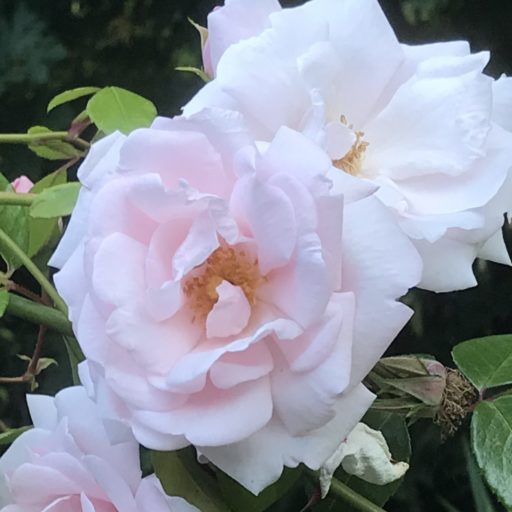I began to write this in October 2012. Here at the beginning of 2014, now finally teaching and dealing with flexible thinking as I and the family adjust to the changes of the last year, I am putting it up for comment — I do not consider this a completed piece, but a holding post until I can get the time to do justice to this topic. Thoughts and comments are invited!
When I was younger, the burgeoning field of neuroscience was much a topic of conversation. Among educators, there was excitement over possibilities of right-brain thinking supporting the more traditional left-brain methods. Howard Gardner’s work on multiple intelligences, Betty Edwards’ seminal work Drawing on the Right Side of the Brain, even the interest in Myers-Briggs’ personality typing were used separately or in conjunction to promote more wholistic, integrated learning. From these developed curricula and theories of teaching and learning such as “Math Their Way” and various reading curricula focused on experiential learning.
When I was in high school, studying calculus, and hearing about these ideas from my teacher-mother, I sprained my writing hand and needed for a day or two to use my other hand. I found that using my unfamiliar hand to do mathematics helped me get my mind around concepts that had puzzled me.
When I went through ajudication for piano, the ajudicator asked if I was left-handed because my bass lines were clear and well-balanced.
When I played darts in the attic at home, I threw better left-handed than right. When I played baseball, and went up to bat, I had to think about which way to stand.
I decided that I was probably mostly ambidextrous, but still considered myself right-handed because I wrote and ate with my right hand.
Genetically, there is a very strong, indeed highly unusual, distribution of left-handed people in my family. Three out of four biological grandparents, three out of four aunts and uncles, and my own sibling are or were left-handed. Both my parents were right-handed.
The connection between brain science and handedness is this: the “experts” said for decades, enough that it has become a meme with the power of truth, that the right brain is keyed to the left hand and the left to the right. But my experience has been that my left hand keys to the left brain and my right hand to the right.
Is this perhaps because, as a nearly-ambidextrous person I had the choice to adopt right-handedness as a young child, thereby reprogramming myself in some way? Or is the brain just more fluid, more amorphous, less well-compartmentalized than reported in the science literature?
I think the answer is, “both, and.”
It is common for people to adopt a pseudo-understanding that gets at generalizations, without realizing the full complexity of their subject. Over time, if one works with the content, deeper understandings develop that allow for ambiguity, alternatives and alliteration (sorry, writer’s joke that I choose to leave in)… People who are comfortable with their understanding tend to also be able to accept seemingly disconfirming evidence as valid while they continue to look at and weigh the evidence against their ideas.
I think that, early on, scientists at the cutting edge of combining neuroscience and education were looking at big-picture and beginning to develop hypotheses that fit their observations. They didn’t yet realize or have the ability to articulate the complexity of the brain and how that flexible organ adapts to individual experience. However, they had enough data to be able to say with some authority that the brain learns better when there are many opportunities to build on learning, through experiences that involve seemingly unconnected or tangential tasks and experiences.
This was picked up by educators and social scientists who had long understood that children and adults are stronger learners when they have the ability to explore widely, using more than one kind of experince. Though this is not a scholarly essay, I refer interested readers to the work of John Dewey and Jerome Bruner, educators and researchers who advocated for integrated learning in the previous century. For more recent scholarship, Bransford has collaborated with many researchers in the last few decades, and Bernice McCarthy’s 4-MAT model for teaching and learning is one way that the idea of integrated studies can be implemented.

Leave a Reply